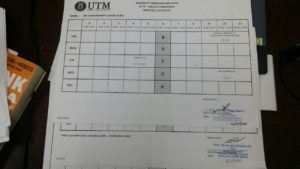What is impostor syndrome? It is said that even Albert Einstein experienced this before regardless of his astounding achievement. But, you don’t have to be Einstein to experience impostor syndrome. It exists in any high achievers who have self-doubt about themselves.

Picture is taken from The Networking Nerd
Many studies have been conducted on this since psychologists explored this phenomenon back in the 1970s even. Many articles have been written to give some tips that people can use to overcome this phenomenon such as what is proposed by Valerie Ashby (who is highly accomplished academician). There are also some articles written by graduate students to document their journey of experiencing impostor syndrome as post graduate students such as by Adam Persky.
Why do I care to search information about this? After I finished my Latihan Ikhtisas, some seniors told me that I should gear up my efforts to climb the social ladder of the academia. Rather than being a “normal” senior lecturer, it is impertinent for me to prove that I deserve to be promoted to Associate Professor. The thing is, I have this idea of what constitute an Associate Professor and a Professor. I don’t think I have what it takes to become one now. But I know some might think otherwise because they are not experiencing impostor syndrome. They are Jack of all trade, master of none. I want to enhance my skills. This would take me years to do so. I know some use political measure to climb the academia social hierarchy, but I am not them. I know where I stand. Being true to myself is not easy. I know. But, like Dr Seuss said
“Be who you are and say what you feel because those who mind do not matter and those who matter do not mind”
Note: I know that I like to use Dr Seuss’s quotes. Sound childish, right? Well, everybody has his own opinion. I respect that.




